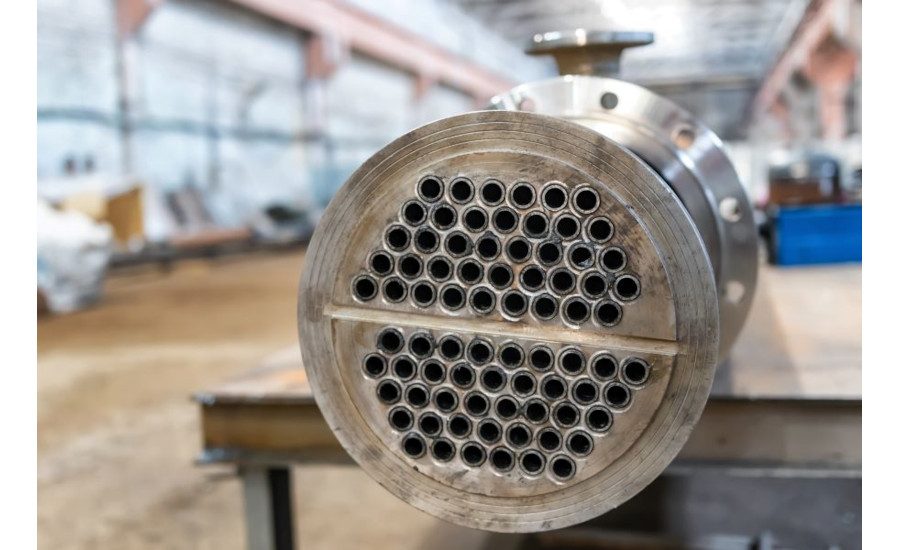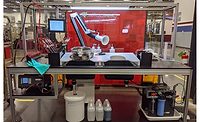Increasing Throughput and Repeatability for Non-Line-of-Sight Plating Applications








All over the world, manufacturing firms are under pressure. Regulatory and cost pressures mean that organizations are embracing new processes to increase throughput and improve efficiency without compromising the quality of their finished product. Patrick Kerampran, Engineering Manager at SIFCO ASC France, explores how a new plating method could be the key to delivering improved repeatability, faster throughput and reduced scrappage for non-line-of-sight plating applications.
Popular Plating Methods
Plating components is known to enhance properties, improve reliability and provide a reliable method of repair. By improving corrosion resistance, strength, durability and conductivity, plating can increase the lifecycle of a product and improve its performance. However, while the benefits are clear, the need for increased process efficiency and production flexibility is driving the need for a more efficient way to plate axi-symmetric parts with deep bores or recessed areas.
Traditionally, plating is done by one of only a handful of methods. The most common tank plating has long been used for plating high volumes of parts. As the name suggests, the process works by submerging the components into a series of large tanks of plating chemicals. When only a specific area of a component needs to be plated, it must first be masked to protect the remainder of the part from the solution in each tank.
When plating smaller volumes of parts, selective plating, also known as brush plating, can be used to enhance and repair specific areas of a part. By focusing on a small area rather than submerging the entire component, plating can enhance wear or corrosion resistance exactly where it is needed. As well as removing the need to disassemble and mask the part to plate it, selective plating also uses a smaller volume of chemicals, making the process more environmentally friendly than tank plating.
However, while both tank and selective plating have served the industry well, there are instances where the component design, plating requirements or production volumes make both of these processes unsuitable. For these difficult applications, a new kid on the block encapsulated plating offers the optimum solution.
What is Encapsulated Plating?
Originally developed by SIFCO ASC for the high-speed plating of components for the automotive industry, encapsulated plating combines the best of both tank and selective plating, offering a sustainable way to plate axi-symmetric parts with deep bores or recessed areas.
Using custom tooling to encapsulate and seal the part, the plating solution is directed through a gap in the tooling, allowing it to flow over the part at high velocity. Electrodeposition occurs when the electric current is passed through the chemistry as it flows over the area.
State-of the-art, customized electrodes are designed to match the complex geometry of the selected area. Custom-fit seals encapsulate the area, allowing for a defined gap between the anode and the component. By using custom tooling, the solution flow is confined to the surface to be plated and the electrode. The tooling is designed to keep better management of flow in order to avoid cavitation risk at the anode / cathode interface. The optimized high solution flow velocity aids in removing hydrogen gas bubbles at the surface. In addition, it efficiently replenishes the metal ions at the surface of the workpiece providing for a smooth and uniform finish.
Speed, Efficiency and ROI
When it comes to selecting the best plating method, it is important to consider factors such as part geometry, deposit thickness, uniformity and finish. However, when plating high volumes of axi-symmetric parts, encapsulated plating offers a range of efficiency advantages, including faster cycle times, fewer costly reworks and factory footprint efficiencies.
The use of custom all-in-one tooling rapidly deposits a precise thickness of metal on a selected surface of even the deepest bore. This process eliminates the need for masking and other time-consuming pre-plating procedures that would usually slow down the plating process. With no large tanks required and no need for a full plating line, the small footprint of the process means that it can be carried out in-house and incorporated into the current production layout.
As well as being used to plate new parts to alter and enhance their properties and improve their service lifespan, encapsulated plating can be used to improve and extend the life of worn-out components. This has a direct impact on scrap rates, reducing downtime, component failure and production costs by extending the life of the part.
Improved Process Control
As industries become subject to increasingly strict standards, both components and finished products must stand up to scrutiny. Ensuring process control, repeatability and traceability is key to ensuring that manufacturers meet exacting industry specifications.
As a one-piece flow treatment, which uses the same tooling and parameters time and again, encapsulated plating offers increased process control versus other surface plating methods. The ability to manage speed, temperature, flow rate and the amps used as part of the plating process, provides a high level of control, while the design of the system makes it possible to track and trace the plating process parameters for every part plated.
Crucially, once the process parameters are set - including deposit thickness, deposition rate etc. - the process remains the same. This means that the user can expect to get repeatable results, producing a component with exactly the same surface finish every single time.
Safety and Sustainability
With companies increasingly turning their attention to decreasing their carbon footprint and improving working conditions, switching to a more sustainable method of production can help companies to meet EHS obligations.
The custom-designed tooling used for encapsulated plating offers improved health and safety credentials versus other plating methods. With the component and plating solution enclosed within the tooling, operator safety is improved by limiting exposure to chemicals.
In comparison to tank plating, which uses vast quantities of chemicals, encapsulated plating also uses significantly less solution and creates less effluent waste, posing minimal risk to the environment. The small footprint of the process means that it can take place at the customer site. With no need to ship products off site to be plated, companies can further reduce the carbon footprint, cost and downtime associated with off-site repairs.
Right Process, Right Time, Right Place
Encapsulated plating provides an ideal alternative when the volume of parts to be plated is too high for brush plating, but too low or too complex for tank plating. While the main advantages mirror those of brush plating, including minimized masking and waste generation, no need to immerse the entire part and a fast plating rate, the nature of the process means that it can be used to plate parts with non-line of sight areas and dimensions.
Having a fast and efficient way to plate parts with recessed areas, sharp corners or axi-symmetric geometries such as pipes or couplings stands to hugely increase process efficiency across a range of industries.
For more information on selecting the right plating method for your application, visit http://www.sifcoasc.com/
Looking for a reprint of this article?
From high-res PDFs to custom plaques, order your copy today!









